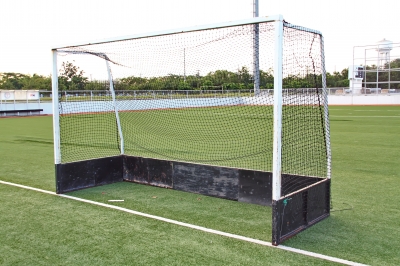The Different Positions in Football: an In-depth Look

Everyone knows that football is a team-oriented sport. The nature of the game makes it impossible for one man to win it, let alone play it effectively. Essentially, a single football match consists of 2 11-man teams trying to break each other’s defenses while also wrestling control of the ball to their side in the hope of scoring a victory. Each of the 11 persons on a team assumes a different role in the game. Essentially, there are three main positions in Football.
Defenders
Consisting of 4 men on a team, defensive players are located nearest to the goals and are evenly spread across the field. Their main goal is to stop a striker from scoring a goal for the opposing team. Defending players can either be positioned as central defenders, a right full back or a left full back.
Defensive players are generally required to be bigger, burlier and taller than their teammates in order to properly defend a position. Though a bit lacking in the technical skills those other positions need, defensive players more than make up for it in grit, sheer physical size and determination. A proper defensive strategy in football will act like a brick wall, stopping all kinds of attacks before they even get close to the goal.
Midfield
Located, obviously, in the middle of the field, midfielders assume two very important roles in football: offense and defense. Depending on the coach’s strategy, midfielders can be arranged in a diamond formation with two attacking midfielders, two defensive midfielders and two close-by-outer midfielders. Due to their dual roles, midfielders are often considered supporting players, lending a hand to both the defenders and strikers wherever they are located.
Flexibility is the name of the game if you are midfielders. Coaches regularly assign the midfield positions to players who can quickly adapt to changes in game conditions. They need to master the technique of controlling the space between the two teams, creating it when their team is in possession of the ball and compressing it when the opposing team has it.
Since field conditions can change within a moment’s notice, midfielders often possess quick reaction times and considerable stamina. Midfielders are also know to be “box to box” players due to their reputation of being in their own penalty box in one moment and then being around the opposing team’s penalty box in another.
Strikers
These players often get the glory in most games due to the fact that their role gives them direct control on how their teams will score in the game. Coaches usually employ two different kinds of strikers for a match. The first forward player would have to be big and tall which allows them to work through the opposing team’s defenses head-on.
The other striker will have to be smaller and nimbler, allowing them to zip through the defenses and strike at the opposing team’s goal. With the right combination, the strikers can quickly earn a point for their team and, hopefully, win the game.
If you would like another point of view on the position on the football field, check out the BBC’s sports website which has some good information, here: http://news.bbc.co.uk/sport2/hi/football/rules_and_equipment/4196830.stm
